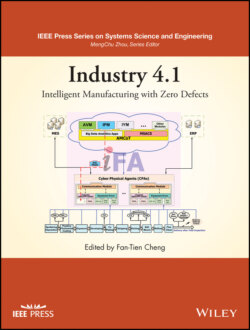Читать книгу Industry 4.1 - Группа авторов - Страница 39
2.2.1.1 Sensing Signals Acquisition
ОглавлениеA sensor is a device that detects and measures a physical quantity from the real‐world environment and converts it into signals. Almost an infinite number of parameters can be acquired, such as light, temperature, location, displacement, movement, sound, pressure, moisture, voltage, current, and a great number of other environmental phenomena. Sensors are the key enabling devices for improving manufacturing capability and productivity.
With the emergence of the Fourth Industrial Revolution (Industry 4.0), cyber‐physical systems (CPSs), and industrial Internet of Things (IIoT), the number of sensors on equipment is increasing rapidly. Currently, various sensors can be seamlessly connected to equipment through generic platforms for integrating numerous devices, various tools, and shop floor information into a smart factory. In ubiquitous sensing, all possible sensors are connected to provide essential data for both IoT and big data in a given environment. These pervasive sensors enhance awareness of time‐varying information for physical manufacturing processes, thus they bridge the cyber and physical worlds. The output of a sensor is generally a converted digital format that is human‐readable at the sensor location or electronically transmitted to an external system to serve as the input for further processing and application. In the following, various sensing techniques and the issues of sensor selection and installation are presented.
